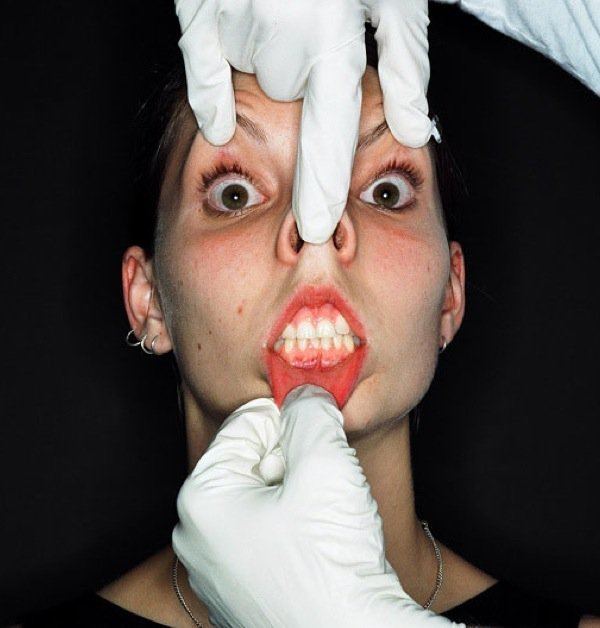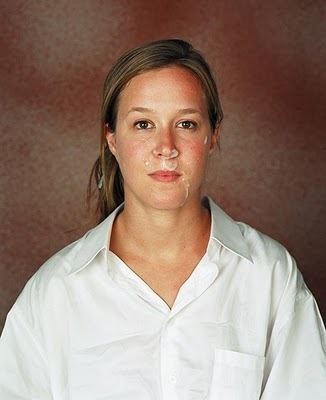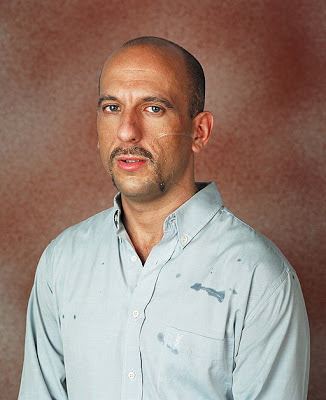Name Ashkan Sahihi | ||
 | ||
Books Pictures and Their Stories Born November 27, 1963 (age 57) | ||
Ashkan Sahihi | Raum für Notizen
Ashkan Sahihi (born November 27, 1963) is an Iranian-American photographer known for his unique photographic series.
Contents
- Ashkan Sahihi Raum fr Notizen
- Life and work
- Photographic Series
- Exhibitions
- Selected Book and Catalogue Publications
- References
Life and work
Born in Tehran, Iran, Ashkan Sahihi moved with his family to West Germany at the age of seven. Although he began taking photographs as a teenager, Sahihi traces the beginning of his professional trajectory to New York in 1987, a thriving “pop culture metropolis” where he could do the kind of photography work that he wanted to do, exploring the underbelly of the society around him. Taking assignments from German publications such as the Süddeutsche Zeitung Magazine, Der Spiegel, Dummy and GEO, he photographed subjects like prisoners on death row, players in the hip-hop scene, and the downtown art scene of New York. Neither black nor white, an insider among outsiders, he found himself able to navigate spaces and dynamics that others might have had difficulty entering. He considered this both a privilege and an obligation – to visit these places and tell these stories. His success led to commissions from American publications as well, including The New York Times Magazine, The New Yorker, Rolling Stone, and Vogue.

Put off by the limitations of photojournalism (the expectation that he would illustrate the writer’s perspective rather than author a narrative of his own), Sahihi began to embark on independent, highly compact conceptual series. His main goal in these series has been to drive forward public discourse on topics he believes have not provoked enough or the right kind of discussion: drugs, gender in the media, women in the military, etc. His portraits draw on a familiar visual language – often seated subjects before a neutral backdrop – but push the viewer to feel and think about entirely new things. Although he constantly challenges the comfort level of both the viewer and the subject, Sahihi never removes himself from the line of fire; all of his work requires the artist to immerse himself in uncomfortable situations and challenge his own emotional fortitude.
Photographic Series

In the “Face Series” (18 images), latex-gloved hands manipulate the subjects’ features, stretching, pushing, squeezing, pinching at the whim of external direction – from the artist? The customer? The public? The “Hypnosis Series” comprises 8 portraits of hypnotized subjects each experiencing a single emotion, e.g. helplessness, withholding/anger, or regret. In a society that rewards the suppression of such naked emotion, the purity of these depictions is arresting.

In 2006, Sahihi photographed himself in the homes and with the families of six ex-girlfriends and one ex-wife, imposing himself more or less awkwardly on the constellations that emerged after he had exited their lives (“Exes Series”).

For Sahihi’s most well-known work, the “Drug Series,” he convinced 11 non–drug users to consume a particular drug, then took their portraits over the course of their trips. The series was born out of Sahihi’s frustration with the hypocrisy of the political conversation about drugs in the United States. “By attempting to present an objective image of drug use, the artist addresses the cultural politics that allow our society to simultaneously glamorize the ‘drug look’ in fashion magazines and the entertainment industry and meanwhile turn a blind eye to the complicated, and vast, problem of drug abuse.” Sahihi has exhibited this series at MoMA PS1 New York in 2001, in Dresden in 2008, and alongside his installation “100 Million in Ready Cash."
Sahihi’s dense explorations through small photographic series include “Women of the IDF," portraits of female Israeli soldiers; “Camp X-Ray Guantanamo Bay,” black-and-white landscapes of barbed wire and watch towers; the “Cum Series”; the “Armpit Series”; and the “Kiss Series," in which the artist photographed himself kissing 18 women and men of various ethnicities. Sahihi’s photographs of the Occupy Wall Street movement constitute his latest series of this kind.
In recent years, Sahihi has lived and worked in New York, Istanbul, the Middle East, and London, producing bodies of work in each place that attempt to engage the political discourse he deems lacking in substance.
